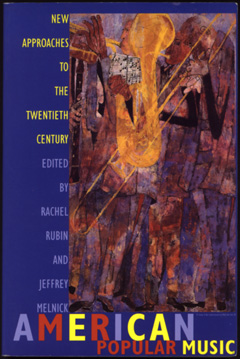For a generation of teenagers coming of age in the 1980’s and early 90’s the world of popular music (“pop”) was comprised of icons ranging from the self-titled “King of Pop” Michael Jackson, to the ever-changing, bottle-blond diva known as Madonna. Whether it’s Nirvana or Prince or even ABBA, these groups or personas touched the masses for a time and, if they were commercially adaptive enough, still do.
At the risk of getting lynched for calling a “grunge” band like Nirvana “pop”-and even being heretical enough to claim that they have something in common with the likes of Britney Spears-they do indeed. Popular music is, as the word states, appealing to the masses at any given time because of any given mood. Arguing that one has more artistic intent is like arguing ethics with a politician; there’s not much point to it and one might as well be speaking in tongues.
Musical tastes are as varied as colors of the rainbow, spanning an endless non-ultraviolet spectrum from polka to classical piano. My tastes are completely different from my father’s tastes. Yet, get him and his buddies started on Elvis and they won’t stop talking about their college days. It is a music most of them listened to and associated specific events of their life with that gave them a common ground. Try to ask him about Garbage and he’ll wonder if I’ve taken out the trash yet.
The definition of “popular” changes with each generation, and trying to attach a specific meaning can cause problems, an idea that Professors Rachel Rubin and Jeffrey Melnick put forth in their co-authored book American Popular Music. Rubin is an American Studies faculty member at UMB, while Melnick originates from the Babson College faculty.
In a collection of essays, the editors of this book describe the focus of their book as being on “those kinds of music that reach many different people-and often times exactly those people who are supposed to scorn (or be scorned by) the music in question….We aim here to present essays which introduce those forms of modern American music that travel…large numbers of people must listen to it – across categories of race, class, gender, age, region, and sexuality.”
More often than not, American Popular Music ends up exploring the historical aspects how genres such as jazz, the blues, rap, and country music, to name a few, made their way into our collective American consciousness. It is the story of how each kind of tune found its way through society, from small segments to large portion, how many complained that particular variety was no longer “pure” or true to its roots, and the debates from where much of it sprang up in the first place.
In How I Got to Memphis, essayist James Smethurst explores the evolution of blues within the US. At first, this style was mostly confined to the African American population before it caught on with white population. Smethurst suggests that “the power of blues to engage those outside the African American community is not due to some generalized emotion – ‘Everybody’s had the blues sometime’ – but instead to very specific experiences of modernity that are not entirely dissimilar from the African American experience.” He goes even further into a discussion of how scholars are unable to determine just where the blues came from.
In the first essay of the book, however, we get an insider’s view of the industry in They Work Hard For Their Money from writer David Sanjek, helpful for those mostly unfamiliar with the politics, consumerism, publication, and the music business.
This book makes for an interesting read. It’s not too technical or specialized as some texts purport to be but is still capable of teaching a great deal without talking down to the reader. In short, pick it up and leaf through whatever appeals to you. If you have an open mind, open ears, and an interest in history, then this exploration of music should interest you.





















































